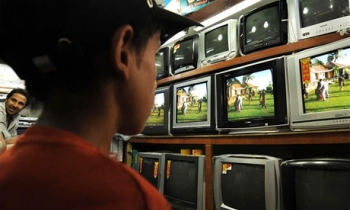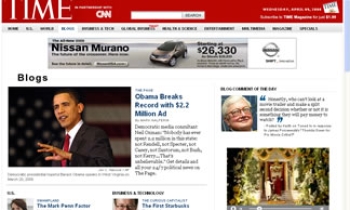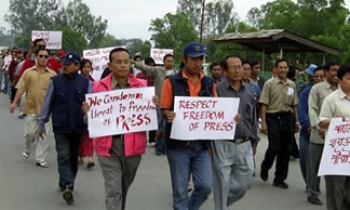The most-hyped site redesign in years has to be the updated look of the New York Times. With the new design, the Times is making a lot of significant assumptions: that visitors have large monitors; that people can navigate dense, confusing layouts; that multimedia bandwidth is not a major problem anymore; and that mainstream sites need to incorporate user input.
When the paper sometimes known as the "Old Gray Lady" is making these assumptions, it's safe to assume that these ideas are going mainstream.
NYT Goes Wide
The first impression of the new site is that it imitates the look of a newspaper. The layout is built for 1024x768 screen resolution, putting an index of the major site sections along the left and using four columns to provide news highlights.
The most important content still fits in an 800x600 pixel screen, but the design basically assumes that users are running at 1024x768 or higher screen resolutions.
The NYT home page is also designed to be browsed, not read. While the print version of the paper features complete articles, or at least lengthy intros, the website provides only headlines and short summaries. This may be the influence of sites like Google News, which are designed to make it easy to scan and find news you're interested in.
Across the top of the new site, there is another navigation element that provides alternate views of the site's content:
* Today's Paper mirrors what's in the printed paper, and provides calendar-based navigation
* Video makes it easy to find the sites' multimedia content;
* Most Popular provides a Top 10-list window into the site
* Topics - Provides a topical index of the site, along with a list of currently popular topics.
* My Times is a personalized view of the site
The New York Times is using the increased space on its home page to provide a broader window into the content of the site.
Crazy Dense & Confusing
The new version of the Times site is also busy to the point that it is confusing, at first. It's been Yahoo'd.
Yahoo has long had one of the densest home pages on the Web. It has remained easy-to-use, though, because sections are clearly separated by color blocks, and because the site has evolved very slowly over time, so you know where to look for news headlines and you know where to click to get to various services.
The Times site initially seems chaotic, with information spread out all over a huge amount of space (about three screens at 1024x768). The layout may have an underlying philosophy, but it appears random on first view. For example, there are five links for the Science scattered around the home page.
The Times is flattening their navigation, making it broad instead of deep, and bubbling up as much information to the top level that they can.
The Times is assuming that users can figure this out - that people will figure out where a convenient Science link is and remember it. As this happens, the home page should provide a quick route for people to get to the information they are most interested in.
Bandwidth Problem? What Bandwidth Problem?
Broadband adoption is pushing 70% in the US, and is much higher in some other areas of the world. High-bandwidth sites are some of the most popular sites on the Internet. YouTube, for example, has gone from having almost no traffic six months ago to being one of the top 100 destinations on the Web.
The Times update recognizes this, putting a Video tab at the top of the page. This site area is essentially on-demand television under the NYT brand. Users can view editorially-selected videos or browse new video content by topic.
Expect companies of all sorts to start creating multimedia portals into their content, and becoming "Internet television stations".
If You Can't Beat 'Em, Join 'Em
Mainstream media has generally resisted user-generated content, which has led to an explosion of sites that let users blog, share links, comment, and discuss news events. Sites that don't let users contribute and interact risk being marginalized.
The Times appears to be taking an "If you can't beat 'em, join 'em" approach to dealing with the world of blogs and user-generated content. While it isn't suddenly becoming a Web 2.0 site, it seems to be recognizing users value this interaction and that users can provide a dynamic perspective into what people consider important on the Web.
The Times provides several different user-generated indexes to the site's articles, including: * Most emailed articles
* Most blogged - articles most frequently linked to by bloggers
* Most searched terms
* Most Popular Movies
User-generated indexes can often be more useful than other types of indexes for quickly finding current information. For example, if you're interested in seeing a movie, a list of the most popular movies, linking to Times reviews, provides trusted-source information sorted by its relevance to movie-goers.
These small steps aren't going to threaten sites that are heavily based on user-generated content, like Digg or Memeorandum. The Times' new features do, though, add some "Wisdom of the Crowds", providing a view of the news that is timely, dynamic and relevant.
Summary
The Times isn't doing anything that other, more cutting-edge, sites haven't already done. What's interesting about the redesign is that the New York Times is taking a leading-edge approach to creating a big, mainstream media site.
The Times is assuming that people have fast computers and fast Internet connections, that readers are smart and that they have opinions that are important. For an "Old Gray Lady", that's pretty progressive.









